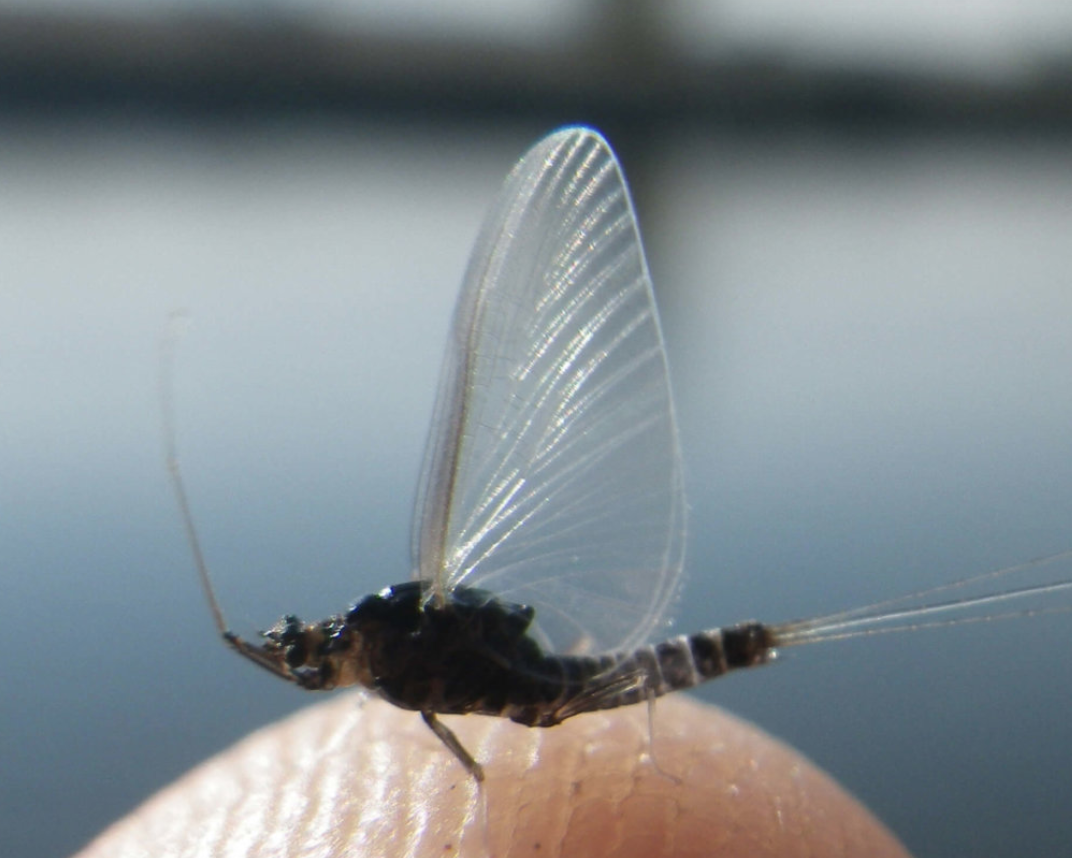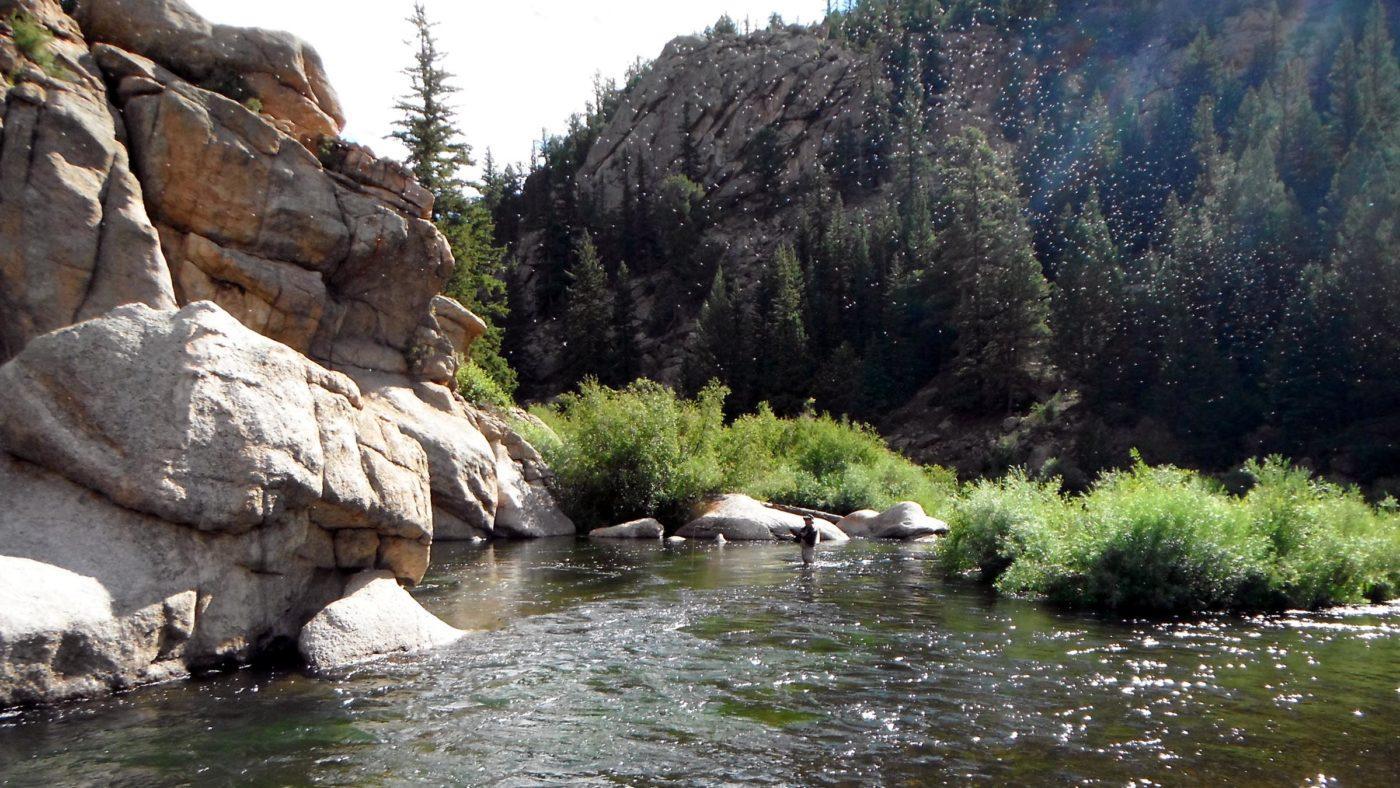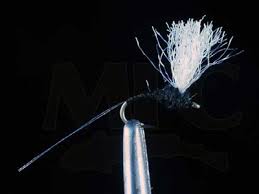July Bug of the Month: The Trico
It’s that time of the year that all fly fishers eagerly await. The time when we squint our eyes and frantically throw size 24 dry flies to rising trout. Topping our list of “the most enjoyable dry fly for July” is the Trico — Tricorythode. This little mayfly is our perennial choice for July’s Bug of the Month.

The 4-1-1
Probably the biggest controversy surrounding the Trico is the pronunciation of its name. While some argue that it should be pronounced TREE-co, others argue it should be pronounced TRY-co. This latter group, we will call them “the correct ones,” cite other words that begin with “tri-“; for example, children don’t ride a “TREE-cycle.” Photographers don’t set up a “TREE-pod.” Regardless of how you pronounce it, almost all anglers agree on the effectiveness of this pattern.
The Trico is a small mayfly prevalent from about mid-July to late September. Small in size, ranging from 3-7 millimeters in length. Tricos become a staple on most every cold river in the west. On the South Platte, the Trico becomes the preferred summer meal of trout. These hatches can be so intense that their swarms look like smoke above the river. Their small size is offset by the sheer number when they begin to hatch. Because of the density of these hatches, they tend to lure all of the trout to the top of the feeding column on the river.

Tricos prefer cold water and silty, weedy areas in deeper pools on the river. The hatches are fairly predictable, with water and air temperature being the key to the hatch. Early morning to mid-morning is typically the best time to witness these hatches. This is followed by the “spinner fall” when most of the feeding occurs. The Tricos fall mercilessly to the surface of the river, often collecting in eddies and kicking off a massive feeding frenzy.
How to Fish the Trico
Fishing this hatch can be notoriously tough. The fish really seem to key in on certain sizes and life stages of these mayflies. Over the years, on occasion I have personally thrown a bunch of different patterns trying to fool the fish to no avail. Studying the fish and their behavior is important in fishing this hatch. You can time the rises and time your presentation. Take the time to watch the fish before you go hucking flies at them. A little patience can pay huge dividends. I would also suggest having a second rod already rigged with a dry fly/ dry-dropper system. These hatches can turn on and off like the flick of a light switch.
Here are a few techniques and patterns I like to use during the Trico hatch. The key is being prepared for each stage of the hatch.
Before the hatch really begins, a standard nymph rig with a black RS2 (size 22-24) will produce success. Green RS2’s can also be electric as they signify the female Trico. In my opinion, the RS2 should always be a staple in your fly box. Small zebra midges often prove to be an effective pattern to fish during this stage.
Black RS2 emergers or a black baetis emerger will signify the emergence stage. The density of these mayflies keeps these nymph patterns “in play” all day long as well.
During the spinner fall, I like to throw a combination of adult Trico dry flies with a spent -wing dropper. A very important thing to look for during the spinner fall: refusals to your flies. If you get a couple of refusals, change your flies! It’s worth the time because when you do discover the hot pattern, you can hook up on almost every cast.
Some Go-To Patterns for Different Stages
Nymphs
- Black RS2 (size 22-24)
- RS2 emerger. Whitleys sparkle wing (22-24)
- Mayhem size 22
- WD-40, black, size 22
Adult dries
- Juan’s 180 degree trico (24)
- Neil’s smokejumper size 22
- Vis-a-dun, black, size 22
Spent wings
- Engle’s drowned trico (pictured; 22-24)
- Sunken Trico Spinner (read more on Orvis News)
- Poly spinner (22-both male and female)
How To Tie the Trico

Juan’s Traditional RS2
Check out this video for instructions on how to tie the Sunken Trico Spinner.
ED Engle walks us through his Drowned Trico.
I hope you can get out and enjoy one of the most fun dry fly events of the year. The Trico hatch can be extremely rewarding when you take the time to figure it out. Please stop by the shop and we would be happy to show you these patterns or just talk Trico’s.

I’ve not ever caught a fish on a Trico! These tips will end that drought!!
Thanks!
John. Please let us know if you have any questions. We hope you find success!!